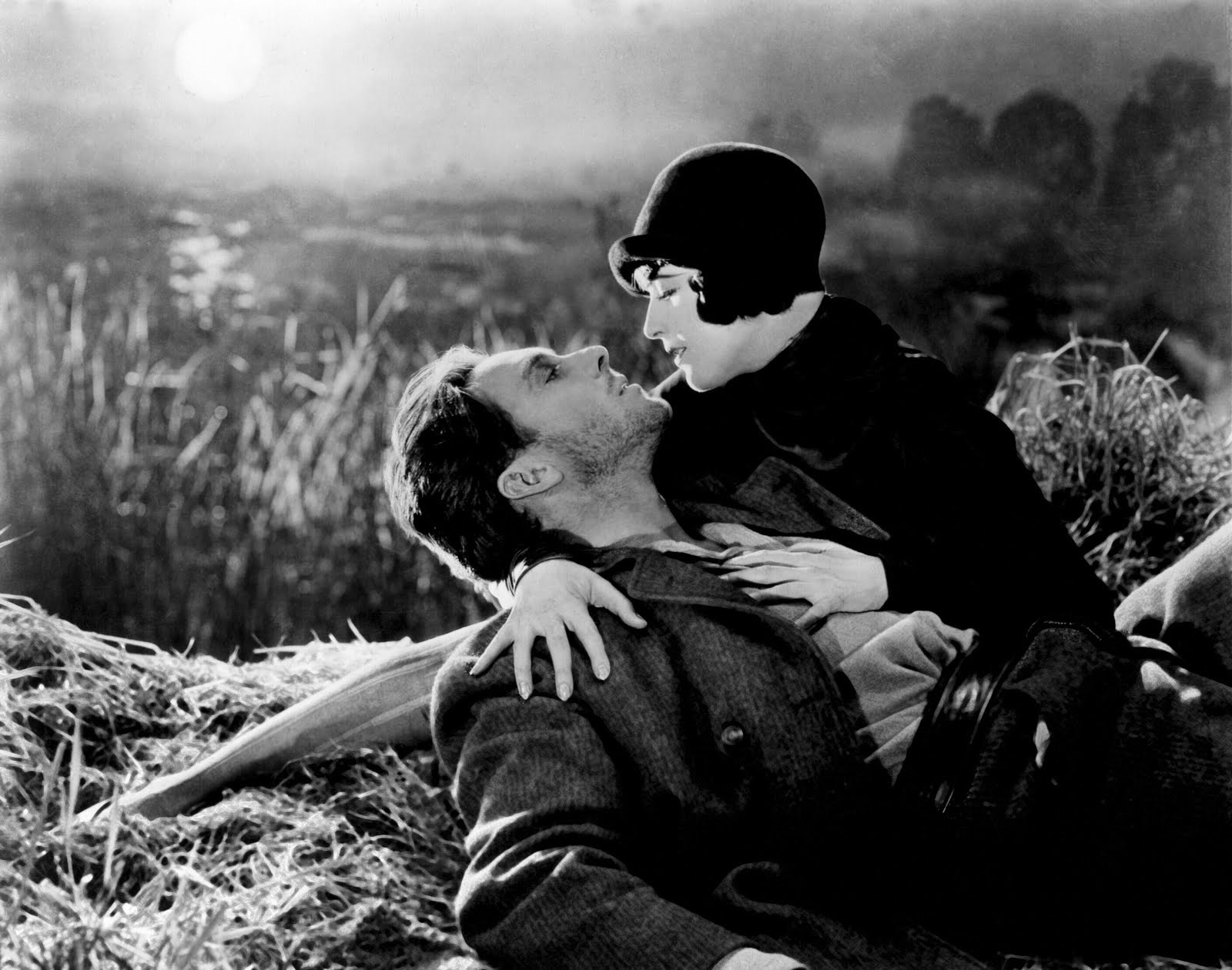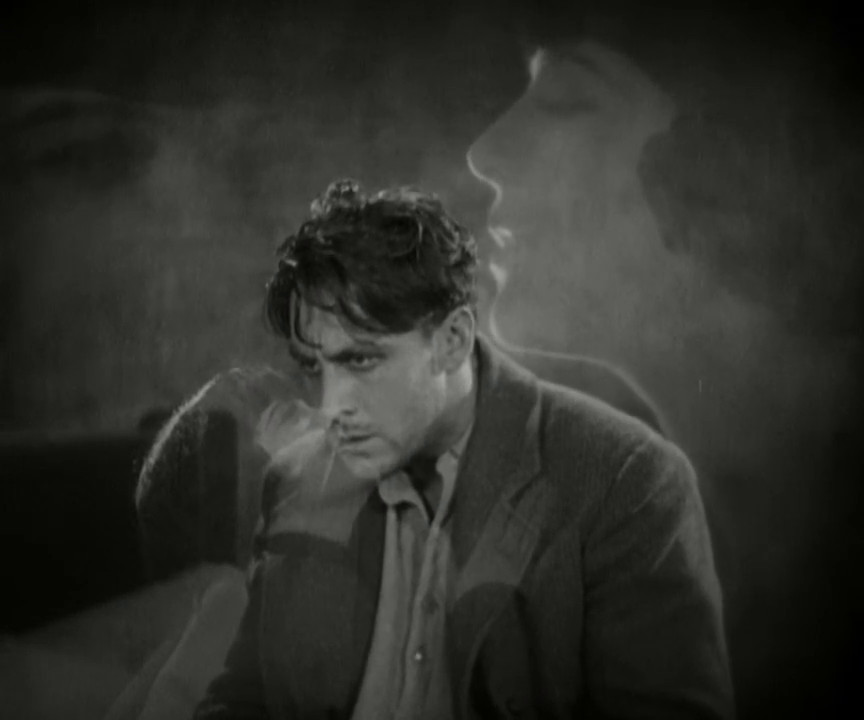 Rural idyll disrupted by city temptation in Sunrise
Rural idyll disrupted by city temptation in Sunrise
I need to make a confession. I thought writing about classic films for payoffsong.com would be a breeze. I envisioned it as a relaxing escape, a refuge from the endless stream of uninspired blockbusters and soulless commercial movies that dominate modern cinemas. I was planning to casually discuss the enjoyable classics from cinema’s golden age. The ‘Golden Oldies’ would be my cinematic comfort food, perhaps with a few modern gems sprinkled in for variety. The whole project felt like it would run itself, a soothing balm for my movie-going weariness.
Then I watched Sunrise: a Song of Two Humans.
Suddenly, this project wasn’t going to be easy. It certainly wasn’t going to be relaxing.
Now, this writing endeavor feels like a living thing, churning and bubbling within me. Sleep offers little respite as ideas and perspectives on cinema constantly turn over in my mind. Watching Sunrise opened a Pandora’s Box of cinematic thought, and there’s no closing it now, no going back to a passive approach. The fact that a silent film, crafted in 1927 by German director F.W. Murnau in Hollywood, could explode into my personal top five films with such force is both astounding and exhilarating. Yet, Sunrise is undeniably that impactful, that profoundly beautiful. It has blown open the scope of this blog and compelled me to seriously consider the vast possibilities of where to take it next.
Extensive reading confirms that I am far from alone in my profound appreciation for this film. It consistently ranks high in prestigious polls, including number 5 in the Sight and Sound’s Greatest Films of all time. There is a wealth of cinematic artistry to admire in Sunrise. Let’s delve into the fundamental plot, a deliberately universal narrative where characters remain unnamed, identified only as archetypes. As the intertitles inform us, this story could unfold anywhere, at any time. The setting is a rural village, a vacation spot for city dwellers. The Woman from the City (Margaret Livingston) lingers after the holiday season, while the other city visitors have returned home. This Woman is the quintessential vamp, embodying the flapper style of the twenties with her smoking, dark hats, and alluring negligees. She has a specific reason for staying: she has seduced The Man (George O’Brien). Once, The Man and The Wife (Janet Gaynor) lived in idyllic happiness, described as being “as little children.” Now, their farm faces ruin due to moneylenders, and The Wife is depicted in solitude and sadness with their young child in their humble cottage. The situation is poised to worsen dramatically – The Woman from the City has manipulated The Man into murdering The Wife, planning to push her overboard during a boat trip. His will weakened by her seductive influence, he nearly commits the heinous act. However, at the crucial moment, his conscience prevails, and he cannot bring himself to do it. Overwhelmed with remorse, he pursues his distraught and fleeing wife, eventually catching her and desperately pleading for forgiveness. She gradually softens, and their love rekindles as they spend a joyful day and night together in the bustling City. Tragedy strikes on their boat journey home. A violent storm erupts, accomplishing what The Man could not: The Wife is thrown overboard, seemingly lost to the raging waters.
Back in the village, The Woman from the City observes the unfolding events and approaches The Man, presuming their murderous plan was successful. He erupts in fury, turning on her and holding her responsible for the tragedy that has befallen his family. However, The Wife’s story is not yet finished, and there remains the possibility of one of the most radiant and heartwarming conclusions in cinematic history.
It’s a challenge to truly capture the magnificence of Sunrise through a mere plot synopsis. A superficial reading might interpret the narrative as overwrought melodrama or even misogynistic, filled with outdated stereotypes of the wicked temptress and the innocent, virtuous wife. Yet, Sunrise transcends these simplistic interpretations, evolving into a profound exploration of pure love rediscovered and reaffirmed. Many consider Sunrise to be the pinnacle of silent cinema, and arguably one of the greatest films ever created. Cinematographers Charles Rosher and Karl Struss crafted virtually every shot into a visual masterpiece, delivering a continuous stream of breathtaking imagery for ninety-five minutes that left me emotionally drained yet profoundly fulfilled. Long before sophisticated special effects or lightweight cameras were available, Murnau’s camera work is astonishing. In one memorable sequence, the camera smoothly glides through the countryside, following The Man to his clandestine meeting with The Woman from the City, pushing through foliage and finally settling by a riverbank as she seduces him under the glow of a full moon. The depth of focus is remarkable, ensuring that no detail escapes the viewer’s eye. Even painted backdrops achieve an unprecedented level of realism. How did they achieve such technical brilliance in 1927?
 The seductive Woman from the City lures The Man into a dangerous plot
The seductive Woman from the City lures The Man into a dangerous plot
She captivates him with vivid visions of the Jazz Age city, depicting delirious dancers energetically jitterbugging to roaring jazz music. The allure of this city is palpable! Remarkably, this split-screen sequence was achieved entirely in-camera, without relying on special effects trickery. Murnau masterfully blends miniature models and live-action footage to construct his cityscapes, creating a visually seamless and impressive urban environment. In a powerful moment of internal conflict, as The Man grapples with the morality of his murderous plan the night before the boat trip, spectral visions of The Woman from the City materialize around him, seizing his mind, possessing him, and relentlessly urging the tormented man onward. Livingston’s portrayal is so compelling, so alluring, that one can almost comprehend how The Man succumbs to the immense pressure and breaks under her spell. Once the initial crisis dissipates and the married couple begins to reconnect in the city, the film presents a series of unforgettable scenes unlike anything I’ve encountered in other movies. At a sprawling, full-scale carnival, towering roller coasters loom over countless stalls, and magnificent fireworks explode in the night sky as the couple explores the vibrant foreground. Sunrise benefitted from a substantial budget for its time, and that lavish production value is clearly visible on screen.
Despite its visual splendor, it’s possible to imagine Sunrise: a Song of Two Humans being merely a beautiful spectacle, lacking in genuine emotional depth. However, this is far from the case. I found myself moved to tears numerous times throughout the film, deeply affected by the raw emotions conveyed by the actors. Janet Gaynor’s Academy Award for Best Actress that year is entirely justified. Her portrayal of The Wife’s transformation from joyful anticipation to mounting terror during the boat trip – the dawning realization that her beloved husband intends to murder her – is truly heartbreaking. Later, as a broken woman in a city café, she cannot even bring herself to look at him as he desperately tries to earn her forgiveness. This profound emotional communication is achieved entirely through body language and nuanced expressions, without a single word spoken. The scene that completely overwhelmed me with emotion occurs when the couple inadvertently enters a church and witnesses a wedding ceremony. Trembling with inner turmoil, The Man listens to the Priest reciting the Groom’s vows: “she is young, and inexperienced… guide her and love her… keep and protect her from all harm… wilt thou love her?” The Man breaks down, sobbing uncontrollably in his wife’s lap, begging for her forgiveness. She weeps as she tenderly strokes his hair. Who hasn’t felt they’ve let down their loved one – the person they’ve pledged to share their life with – in some way, and yearned for redemption and forgiveness? It’s a profoundly moving moment of acting and emotional expression, a standout scene that would be remarkable even in a mediocre film, let alone a masterpiece of this caliber.
Alongside these moments of intense depth and pathos, Sunrise also incorporates surprising instances of lighthearted silliness. A small black pig escapes from the carnival and wanders into a dance hall, prompting a drunkard in a back room to abandon his bottle of liquor. Using his farming skills, The Man skillfully captures the pig – now seemingly intoxicated from lapping up the spilled wine. The crowd erupts in cheers, urging them to perform a lively peasant dance. They oblige, and amidst their dance, a man repeatedly attempts to adjust his wife’s slipping shoulder straps, until, in comical frustration, he simply pulls them both down, earning him a playful slap from his wife. These snippets of unexpected comedy enrich the overall human tapestry being woven within the film. Life, in all its random, chaotic, and often silly patchwork glory, is reflected in these moments.
Once the city interlude concludes and the now-loving couple returns homeward, Murnau unleashes a colossal storm upon both the city and the boat carrying The Man and Wife. The storm is depicted with terrifying realism and intensity. Extras in the city set scramble for safety and struggle to maintain their footing against the powerful winds. Even by today’s standards, the effect is frighteningly convincing. The director must have employed massive wind machines to achieve such visual power. The Wife is tragically lost in the tempest. The Man rallies the villagers to join in a desperate search of the river for her. The subsequent scene is heartbreakingly poignant as the search party gradually disperses, the men solemnly removing their hats one by one as The Man continues to call out for his wife, his cries echoing against Hugo Riesenfeld’s haunting musical score. However, despair not. Sunrise culminates in one of the most uplifting and purely cinematic moments imaginable – I challenge anyone to remain unmoved by its emotional power. The title, Sunrise, holds profound meaning and purpose, and Murnau reserves this transformative revelation for the film’s final moments. In the closing seconds, we are enveloped by the radiant force of pure sunlight and the renewed love between two people, as the destructive forces that threatened to tear them apart recede, returning to the distant city.
I wholeheartedly recommend Sunrise: a Song of Two Humans to anyone with an appreciation for cinema. It represents a pinnacle moment for silent film, achieved just as the era of sound was emerging. However, to call Sunrise a purely “silent” experience is misleading. The film is rich with fantastic music, evocative sound effects, lively crowd noises, and bustling city sounds that actively engage the viewer’s auditory senses. As a visual and acting experience, it is truly unparalleled. Furthermore, Sunrise is readily accessible and legally free on platforms like YouTube, making it easily discoverable for a modern audience. It’s a universal story, exploring themes and emotions that resonate deeply with any ‘human,’ even though it was created nearly a century ago. Personally, I wish I possessed a time machine, allowing me to journey back and immerse myself in the roaring twenties, the vibrant Jazz Age – a time when, for a fleeting moment, anything seemed possible.
So much for my “easy” writing project. It evaporated in ninety-five glorious minutes of Murnau’s Sunrise. I suppose that’s precisely what true art is meant to do – to disrupt, challenge, and enchant. I only hope my eyesight endures for years to come, and that my typing fingers don’t succumb to arthritis. There is a vast amount of cinematic territory to explore, countless eras of filmmaking to delve into, and a world of classic films from all nations to unearth. I anticipate many sleepless nights filled with cinematic contemplation. My cinematic education has been reignited, and I suspect there will be considerable enjoyment along the way.
It was never going to be easy. It was never going to be relaxing. Suddenly, I feel like a film student once more. And it’s going to be exhilarating!
Share this:
Like Loading…
